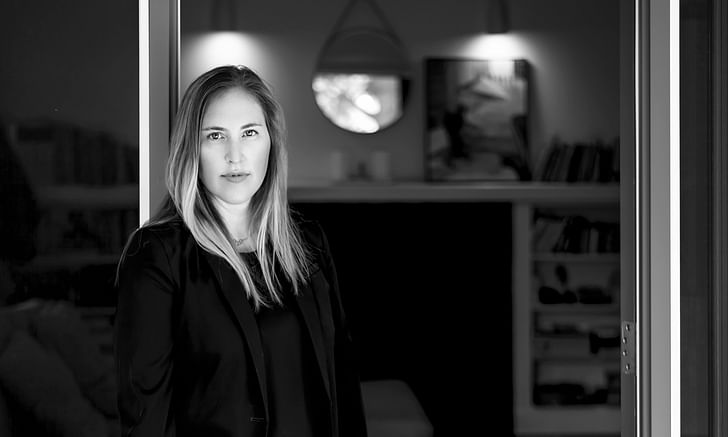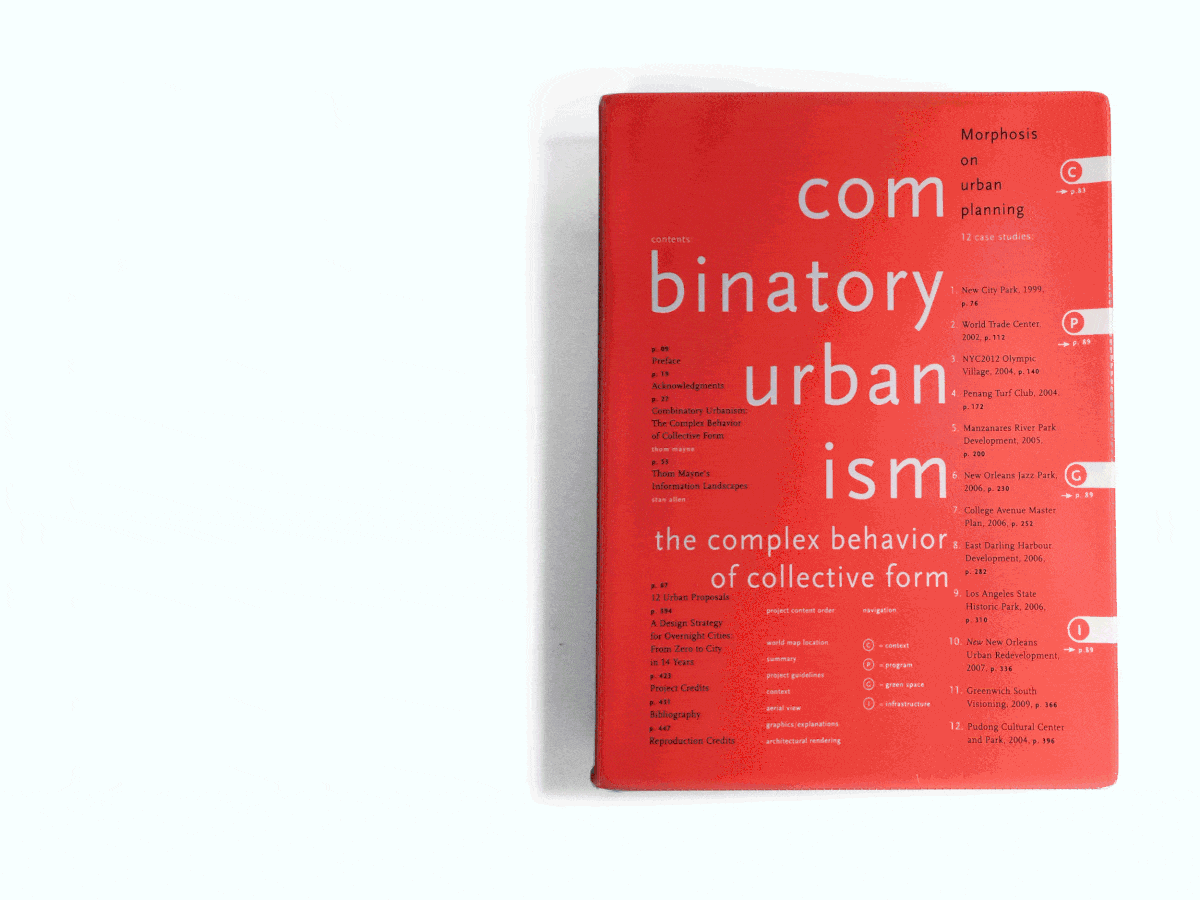

Working out of the Box is a series of features presenting architects who have applied their architecture backgrounds to alternative career paths.
In this installment, we're talking with Stephanie Rigolot, founder of LA-based consultancy WHAT THE WHAT. We discuss her experience working for architects such as Michael Graves and Thom Mayne, and how that evolved into a business devoted to helping architects express their work to the the public.
Where did you study architecture?
I have a Bachelor of Arts in Architecture from Princeton University and a Master of Architecture from UCLA.
Did you practice architecture? Please describe that work experience.
While at Princeton, I wrote my senior thesis on architectural trompe l’oeil and Michael Graves was my thesis advisor. Soon after graduation, he offered me a position at his firm Michael Graves Architecture & Design where I worked on a team designing cultural and institutional projects such as the Nashville U.S. Courthouse, the Children’s Theater Company in Minneapolis and an addition to the Newark Museum.
Afterwards, I was offered a scholarship to UCLA. Arriving in Los Angeles for a tour of the school, I was enamored with the innovative and unabashed experimentation in design and technology, which was much in advance of what was being done elsewhere. In my final year at UCLA, I participated in Thom Mayne’s ‘Madrid Now‘ thesis studio, after which I accepted a full-time position at Morphosis Architects.

While at Morphosis, I was part of the team that designed and developed construction documents for the Phare Tower in Paris. With dual nationality, French and American, I spent a significant amount of time working on the project from a satellite office in Paris. When I started, Thom Mayne had recently won the Pritzker Prize and was increasingly solicited not only to create new building designs but also to communicate his architectural ideas to an ever-larger audience. I worked closely with him to articulate through lectures and publications the genesis of often complex and stylized forms. He invited me to co-write and design a book detailing Morphosis’ approach to urban design entitled Combinatory Urbanism: The Complex Behavior of Collective Form, which was a seminal moment for me in transitioning from creating architecture to contextualizing architecture for the purpose of connecting architects to existing and potential clients.
... a seminal moment for me in transitioning from creating architecture to contextualizing architecture for the purpose of connecting architects to existing and potential clients
From there, I spent five years working on the client side, working for commercial real estate titans Cushman & Wakefield and JLL, in order to understand that perspective. Since then, I have brought that knowledge and expertise back into architecture, first for Steinberg Hart and then for various clients through WHAT THE WHAT, an agency I started in 2016 to help companies increase market presence and drive growth through creative marketing and business strategies.
At what point in your life did you decide to pursue architecture?
I think that growing up I shared many of the common traits found in budding architects, often making new stuff and arranging existing things. I have always been interested in optimizing and streamlining systems and processes. Whether organizing like items into labeled bins or completing crossword puzzles. I find a simplistic joy in categorizing, classifying and putting items in their appropriate boxes. But, at the same time, I am also intrigued by circumstances that defy categorization, that don’t apply to standardization, and force the introduction of new definitions. I found great joy in the architecture classes I took at Princeton, which often accentuated this dueling dichotomy between chaos and order, massaging a given architectural program into an efficient and logical building that is simultaneously altogether new, putting things in their place to then define and accentuate the leftover, the different, the anomaly.
When did you decide to stop pursuing architecture? Why?
When I worked on the Combinatory Urbanism book with Thom Mayne at Morphosis, we developed a common language across twelve disparate urban projects in an effort to distill their complex ideas and geometries into clearly articulated diagrams and quantifiable program bars that allowed readers to better understand and compare the big idea for each, again arbitrating between chaos and order.
At the same time, I yearned for a more holistic understanding of the building process, including the role of capital sources, developers, brokers, architects, and sub-trades. I wanted to zoom out and understand the chess game among all the parties that all-too-often result in engaging the architect after the program brief is already determined, with little flexibility or opportunity to think outside the box.
This led me to positions at Cushman & Wakefield and then Jones Lang LaSalle (JLL) where I was deeply involved in the front-end of the process and saw precisely where and how the architect fits. This experience has enabled me to understand the built environment more holistically and more effectively communicate to all the various constituents working within it.
Describe your current profession and your company WHAT THE WHAT?
I started WHAT THE WHAT in 2016 to help clients increase their market presence through creative marketing and business strategies. We work with companies to communicate ideas, define opportunities, and create impact. With a deep understanding of the field, and a track record in the trenches, we have been successful at merging broad-based, best practices with highly-tailored strategies specifically for the AEC, real estate and building industries. We have developed a research-based system of business development that methodically converts knowledge to opportunities and drives company growth. Through our proven process, we are able to lead clients in a systematic, methodical way to clarify their positions, claim their marketplace, and cultivate relationships.
What skills did you gain from architecture school, or working in the architecture industry, that have contributed to your success in your current career?
I believe that an education in architecture and research-driven design is one of the best investments into a person’s future. Techniques for critical analysis, macro-to-micro problem-solving, and rigorous execution can be applied to any field or discipline. The biggest lesson in architecture pedagogy (and training) today is how and why to challenge the assumptions we hold about conventions of space. When we begin to apply this same thinking outside of architecture, to challenge other assumptions about how things are done, we begin to question the familiar, disrupt status quo, and truly innovate.
I believe that an education in architecture and research-driven design is one of the best investments into a person’s future
Do you see yourself working as an architect again in the future?
I am still very much committed to the profession of architecture. The best part about my current role is that I am able to continue to be part of the architectural community so in many ways it feels as if I never left.
No Comments
Block this user
Are you sure you want to block this user and hide all related comments throughout the site?
Archinect
This is your first comment on Archinect. Your comment will be visible once approved.